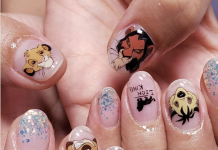Art comes in many forms today, and while some artists prefer to draw graffiti on buildings, other think that turning them into Rubik’s cubes is far more impressive.
Artist and designer Javier Lloret came up with the idea of creating a puzzle facade in Linz, Austria, after realizing that real graffiti is a lot more difficult to remove from a building’s walls. Not even the geekiest tourists walking through this Austrian town wouldn’t expect seeing a massive Rubik’s Cube which seems to have appeared out of nowhere. The puzzle is also strategically placed, as the Ars Electronica building was used for the project.

Passersby might even be handed a white Rubik’s Cube, depending on how fascinated they seem. At first, it may look like the white cube doesn’t make any sense, as any way you put it, it’s solved. Still, there’s an important catch about the miniature version: it can control the bigger puzzle, so all that people have to do is rotate its facades until everything is in place.
Unlike typical Rubik’s Cubes, this building has an increased level of difficulty. Because of its massiveness, anyone trying to solve it will see at most two facades at any given time. I’d like to see someone complaining that the artist didn’t leave much to imagination. Still, the puzzle is not impossible to solve. People can rotate and twist the faces of the cube that they see, but if they want to take a glimpse at the bottom, all they need to do is rotate the controller.
To make all of this possible, Javier Lloret made use of a gyroscope, motion sensors and a Bluetooth connection to a notebook located in the immediate vicinity. Experts and newbies have equal chances of being handed the interface-cube. Some may solve it quickly, while others seem to take forever, as if a piece of the puzzle was missing. Regardless to the experience of each player, the other passersby will have the unique chance of seeing a magnificent light show. The best part is that the whole project does not imply 3D projection mapping. Instead, the LEDs that make up the colored blocks were somehow integrated in the building’s facades. Overall, this is something you don’t get to see everyday, and chances are you could enjoy watching a puzzle facade even if you’re not a big fan of Rubik’s Cube.
If you liked this post, please check these eerie 3D projections of deities on trees and this colossal Rube Goldberg machine 3D projection mapping.










